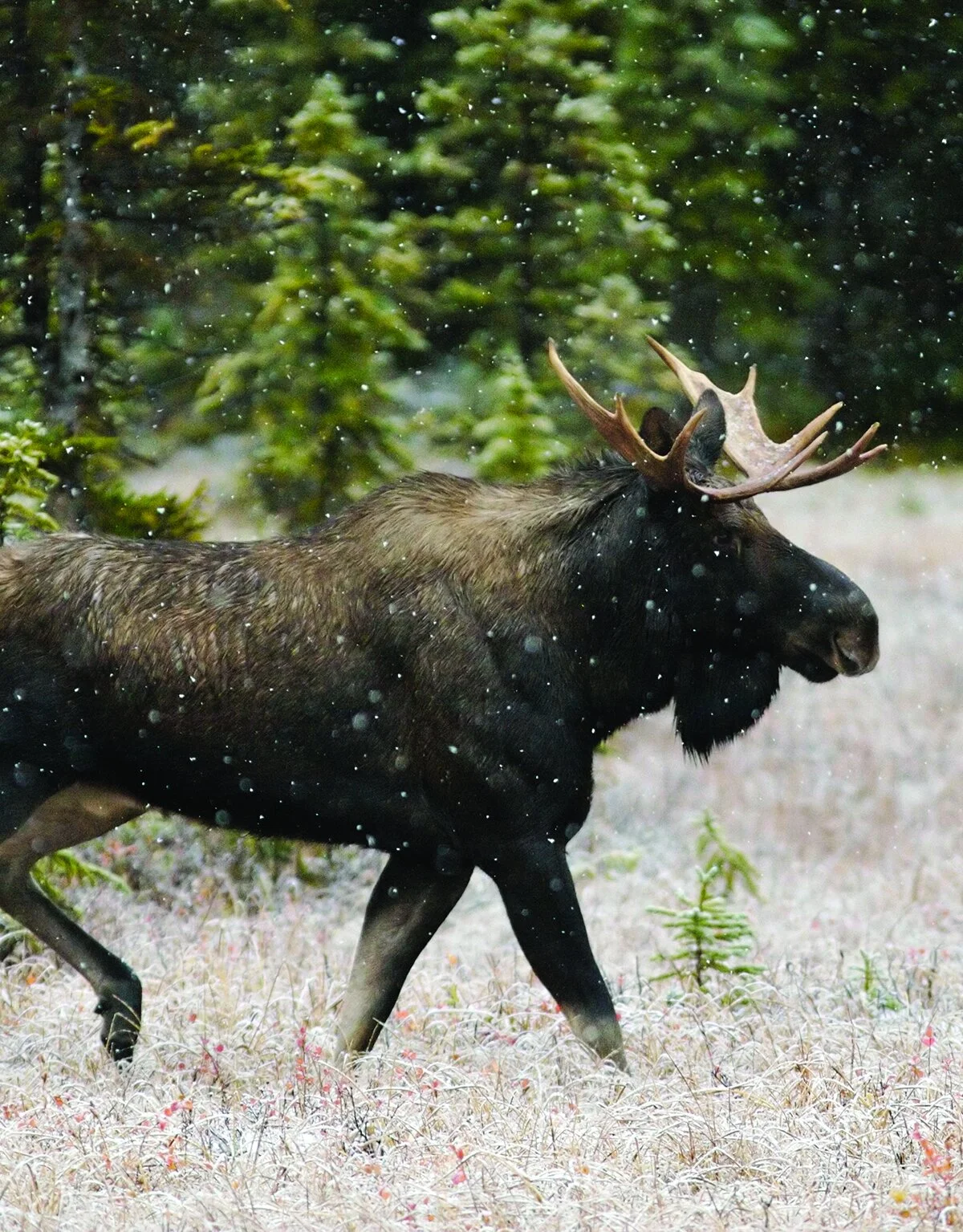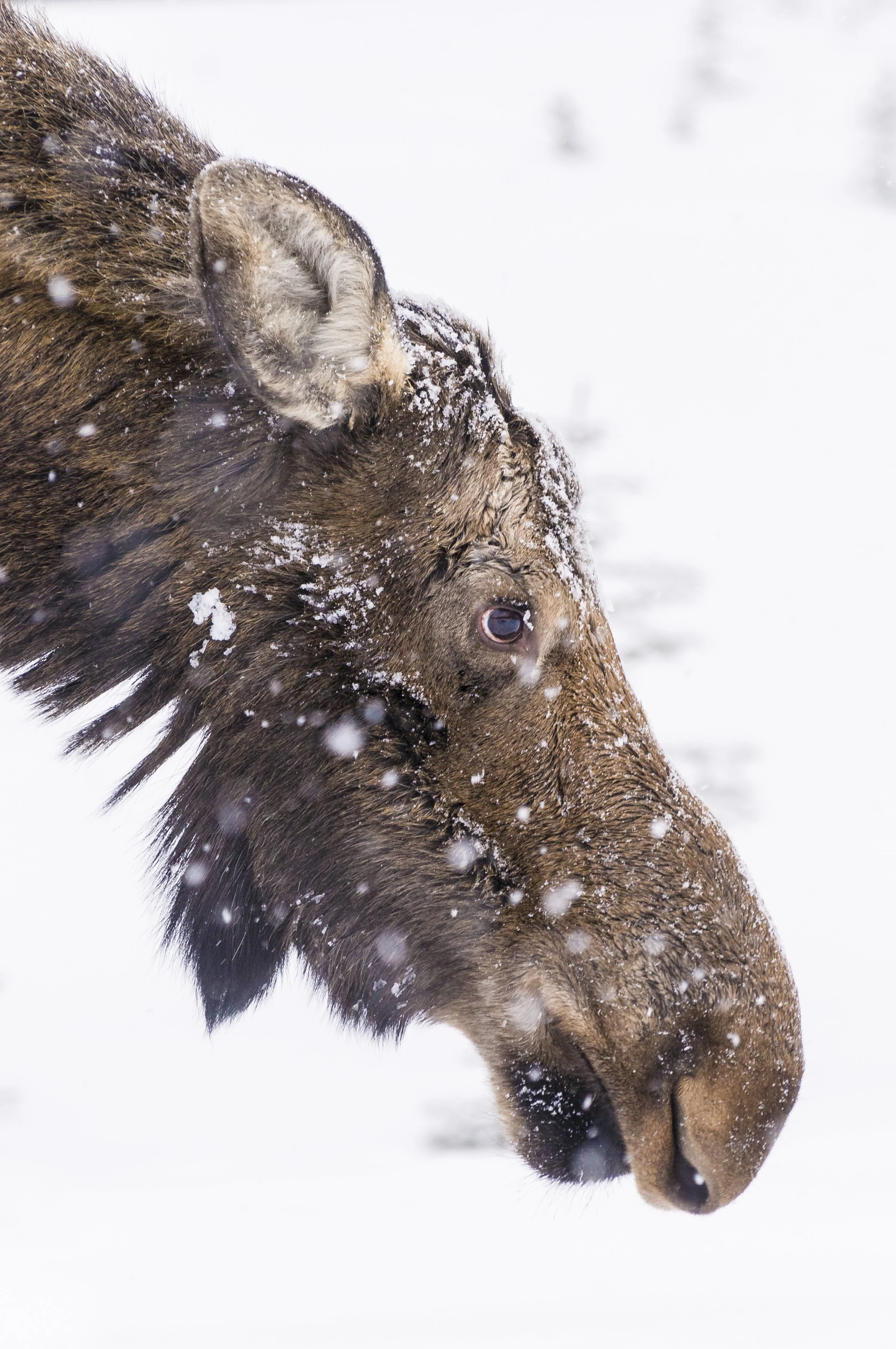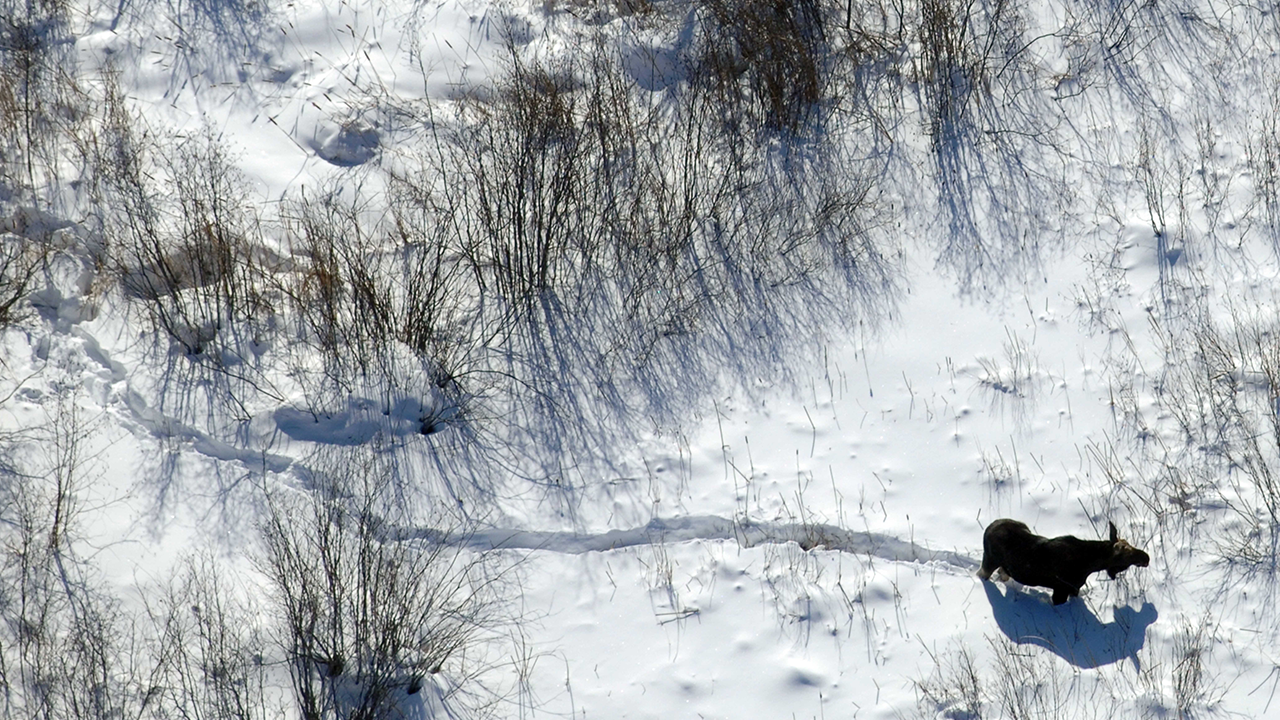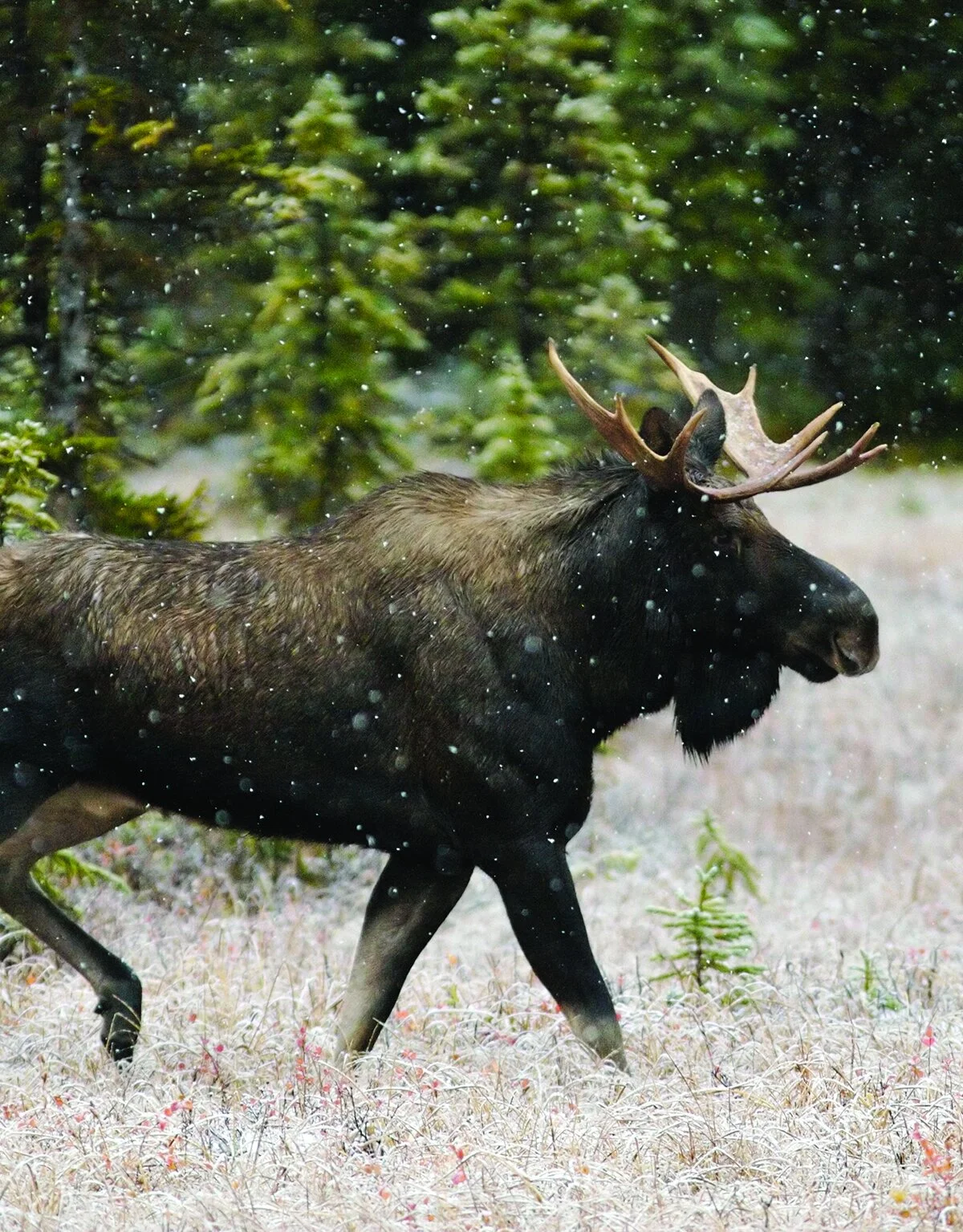The Great Northern is excited to partner with the Minnesota Zoo on future festival programming that will highlight how climate change is impacting the animals that comprise the state’s ecosystem. Humans are not the only climate refugees; many animals that rely on a cold climate to survive are running out of places they can live. Read on to learn more about one such animal that symbolizes our state, though it may not be able to call it home much longer.

Winter is not easy on moose. Trudging through deep snow in subzero temperatures in search of food that is far from abundant and low in nutrition requires a lot of energy. As a result, moose essentially lose weight every single day of the winter months, in the hopes of emerging from the cold triumphant as the spring thaw begins.
In Minnesota, moose have battled winter for centuries. And moose have been integral to human culture here as long as we’ve inhabited the landscape. However, moose in our state have experienced periods of significant decline in recent decades, almost disappearing entirely from northwestern Minnesota. Since 2006, the moose population has declined by more than 50%. After the near total collapse of the moose population in the northwestern portion of the state, researchers were quick to examine moose numbers elsewhere. Over the years, much data have been gathered in an attempt to piece together the story behind the moose decline. And the emerging narrative is a complex one.

Moose are well suited to survival in Minnesota. Their unique snout with a special shut-off valve allows them to feed efficiently in aquatic environments. Long legs help moose traverse through deep snow and swim across many of Minnesota’s 10,000 lakes. And their thick coat of hollow hair keeps them insulated throughout the frigid winter months. Despite these incredible adaptations, moose are not bullet-proof. In Minnesota, it appears that a combination of complex factors has worked against moose in recent years, and it’s uncertain what their future holds. Moose have particular habitat needs that are increasingly hard to achieve in Minnesota. Wolves can put significant predation pressure on moose, especially on calves in their first year and survival is often very low. While deer can help alleviate some of that pressure by providing an alternate prey source for wolves, they also carry many parasites and diseases which can then infect and kill moose. And the changing climate across Minnesota undoubtedly complicates this story even further.
The Minnesota Zoo has partnered with researchers from across the state to unlock the science behind the moose decline and interpret the results to the public. You can learn more about moose and their place in the complex web of Minnesota wildlife by visiting our new online educational platform. Young learners can also try their hand at helping manage populations through the interactive Moose Mission game. This is a great real-life way to connect kids to ecology and population dynamics.
Moose are a Minnesota icon and evidence of their importance across many cultures is easy to find. It’s near impossible for many of us to imagine living in The North Star State without these antlered giants. As moose face an increasingly uncertain future, it’s up to us to do our best to create a Minnesota where they can not only survive, but thrive.


